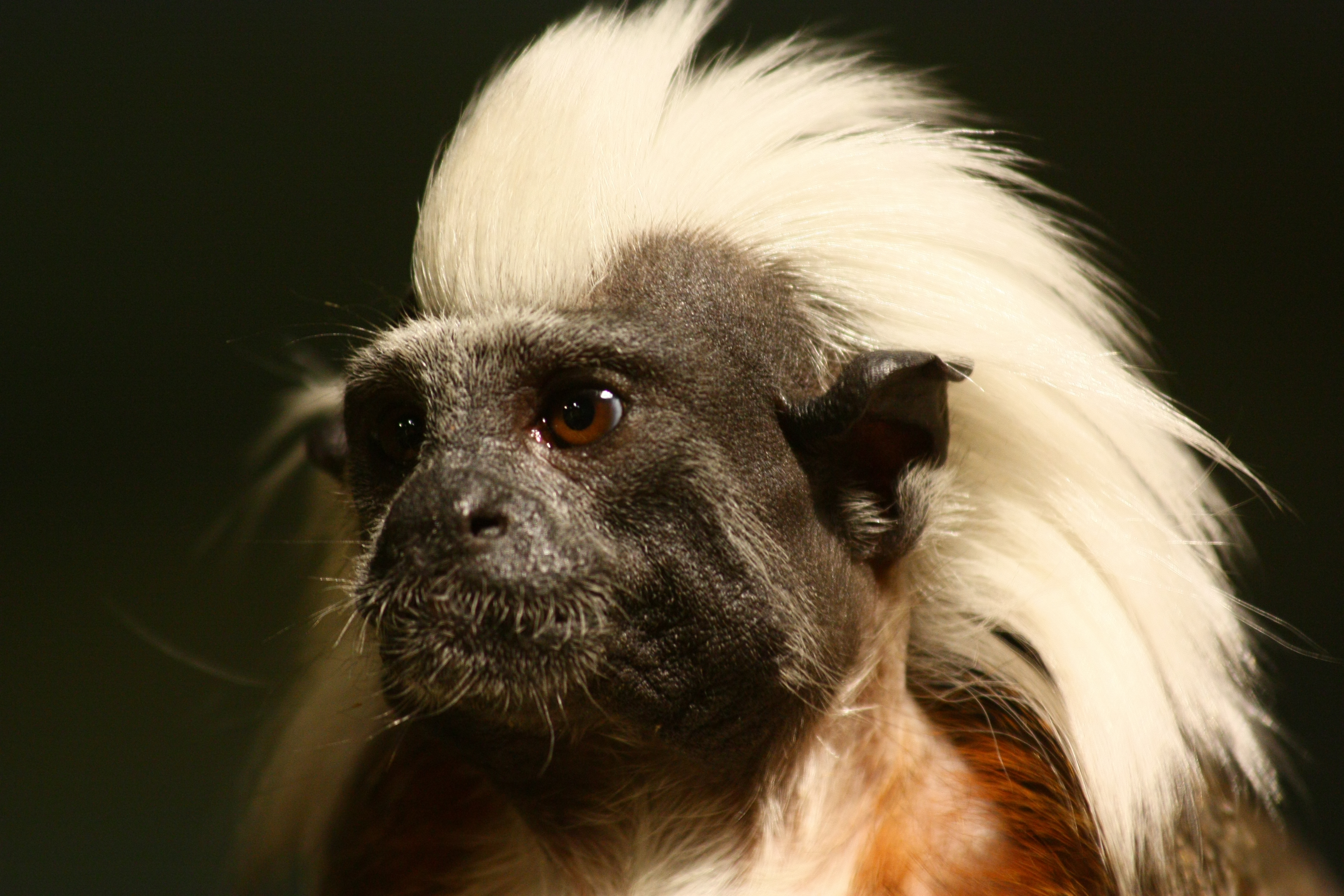|
Prospect Park Zoo
The Prospect Park Zoo is a zoo located off Flatbush Avenue on the eastern side of Prospect Park, Brooklyn, New York City. , the zoo houses 864 animals representing about 176 species, and , it averages 300,000 visitors annually. The Prospect Park Zoo is operated by the Wildlife Conservation Society (WCS). In conjunction with the Prospect Park Zoo's operations, the WCS offers children's educational programs, is engaged in restoration of endangered species populations, runs a wildlife theater, and reaches out to the local community through volunteer programs. Its precursor, the Menagerie, opened in 1890. The present facility first opened as a city zoo on July 3, 1935, and was part of a larger revitalization program of city parks, playgrounds and zoos initiated in 1934 by Parks Commissioner Robert Moses. It was built, in large part, through Civil Works Administration and Works Progress Administration (WPA) labor and funding. After 53 years of operation as a city zoo run by the ... [...More Info...] [...Related Items...] OR: [Wikipedia] [Google] [Baidu] |
Brooklyn, New York
Brooklyn () is a borough of New York City, coextensive with Kings County, in the U.S. state of New York. Kings County is the most populous county in the State of New York, and the second-most densely populated county in the United States, behind New York County (Manhattan). Brooklyn is also New York City's most populous borough,2010 Gazetteer for New York State . Retrieved September 18, 2016. with 2,736,074 residents in 2020. Named after the Dutch village of Breukelen, Brooklyn is located on the w ... [...More Info...] [...Related Items...] OR: [Wikipedia] [Google] [Baidu] |
Bronx Zoo
The Bronx Zoo (also historically the Bronx Zoological Park and the Bronx Zoological Gardens) is a zoo within Bronx Park in the Bronx, New York. It is one of the largest zoos in the United States by area and is the largest metropolitan zoo in the United States by area, comprising of park lands and naturalistic habitats separated by the Bronx River. On average, the zoo has 2.15 million visitors each year . The zoo's original permanent buildings, known as Astor Court, were designed as a series of Beaux-Arts pavilions grouped around the large circular sea lion pool. The Rainey Memorial Gates were designed by sculptor Paul Manship in 1934 and listed on the National Register of Historic Places in 1972. The zoo opened on November 8, 1899, featuring 843 animals in 22 exhibits. Its first director was William Temple Hornaday, who served as director for 30 years. From its inception the zoo has played a vital role in animal conservation. In 1905, the American Bison Society was creat ... [...More Info...] [...Related Items...] OR: [Wikipedia] [Google] [Baidu] |
Meerkat
MeerKAT, originally the Karoo Array Telescope, is a radio telescope consisting of 64 antennas in the Meerkat National Park, in the Northern Cape of South Africa. In 2003, South Africa submitted an expression of interest to host the Square Kilometre Array (SKA) Radio Telescope in Africa, and the locally designed and built MeerKAT was incorporated into the first phase of the SKA. MeerKAT was launched in 2018. Along with the Hydrogen Epoch of Reionization Array (HERA), also in South Africa, and two radio telescopes in Western Australia, the Australian SKA Pathfinder (ASKAP) and the Murchison Widefield Array (MWA), the MeerKAT is one of four precursors to the final SKA. History MeerKAT is a precursor for the SKA-mid array, as are the Hydrogen Epoch of Reionization Array (HERA), the Australian SKA Pathfinder (ASKAP) and the Murchison Widefield Array (MWA). Description It is located on the SKA site in the Karoo, and is a pathfinder for SKA-mid technologies and science. It was design ... [...More Info...] [...Related Items...] OR: [Wikipedia] [Google] [Baidu] |
Cotton-top Tamarin
The cotton-top tamarin (''Saguinus oedipus'') is a small New World monkey weighing less than . This New World monkey can live up to 24 years, but most of them die by 13 years. One of the smallest primates, the cotton-top tamarin is easily recognized by the long, white sagittal crest extending from its forehead to its shoulders. The species is found in tropical forest edges and secondary forests in northwestern Colombia, where it is arboreal and diurnal. Its diet includes insects and plant exudates, and it is an important seed disperser in the tropical ecosystem. The cotton-top tamarin displays a wide variety of social behaviors. In particular, groups form a clear dominance hierarchy where only dominant pairs breed. The female normally gives birth to twins and uses pheromones to prevent other females in the group from breeding. These tamarins have been extensively studied for their high level of cooperative care, as well as altruistic and spiteful behaviors. Communication betwe ... [...More Info...] [...Related Items...] OR: [Wikipedia] [Google] [Baidu] |
Pallas Cat
The Pallas's cat (''Otocolobus manul'', also known as the manul, is a small wild Felidae, cat with long and dense light grey fur. Its rounded ears are set low on the sides of the head. Its head-and-body length ranges from with a long bushy tail. It is well camouflaged and adapted to the cold continental climate in its native range, which receives little rainfall and experiences a wide range of temperatures. The Pallas's cat's pupils are rounded, a unique feature among the Felinae. The Pallas's cat was first described in 1776 by Peter Simon Pallas, who observed it in the vicinity of Lake Baikal. In the early 19th century, it was reported to occur in Tibet, and in the Transcaspian Region in the early 20th century. To date, it has been recorded across a large areal extent, albeit in widely spaced sites in the Caucasus, Iranian Plateau, Hindu Kush, parts of the Himalayas, Tibetan Plateau, Altai-Sayan region and South Siberian Mountains. It inhabits rocky montane grasslands and shru ... [...More Info...] [...Related Items...] OR: [Wikipedia] [Google] [Baidu] |
North American River Otter
The North American river otter (''Lontra canadensis''), also known as the northern river otter and river otter, is a semiaquatic mammal that endemism, only lives on the North American continent, along its waterways and coasts. An adult North American river otter can weigh between . The river otter is protected and insulated by a thick, water-repellent coat of fur. The North American river otter, a member of the subfamily Lutrinae in the weasel family (Mustelidae), is equally versatile in the water and on land. It establishes a burrow close to the water's edge in river, lake, swamp, coastal shoreline, tidal flat, or estuary ecosystems. The den typically has many tunnel openings, one of which generally allows the otter to enter and exit the body of water. Female North American river otters give birth in these burrows, producing litters of one to six young. North American river otters, like most predators, prey upon the most readily accessible species. Fish is a favored food among t ... [...More Info...] [...Related Items...] OR: [Wikipedia] [Google] [Baidu] |
Dingo
The dingo (''Canis familiaris'', ''Canis familiaris dingo'', ''Canis dingo'', or ''Canis lupus dingo'') is an ancient (Basal (phylogenetics), basal) lineage of dog found in Australia (continent), Australia. Its taxonomic classification is debated as indicated by the variety of scientific names presently applied in different publications. It is variously considered a form of domestic dog not warranting recognition as a subspecies, a subspecies of dog or wolf, or a full species in its own right. The dingo is a medium-sized Canis, canine that possesses a lean, hardy body adapted for speed, agility, and stamina. The dingo's three main coat colourations are light ginger or tan, black and tan, or creamy white. The skull is wedge-shaped and appears large in proportion to the body. The dingo is closely related to the New Guinea singing dog: their lineage split early from the lineage that led to today's domestic dogs, and can be traced back through the Maritime Southeast Asia to Asia. ... [...More Info...] [...Related Items...] OR: [Wikipedia] [Google] [Baidu] |
Red Panda
The red panda (''Ailurus fulgens''), also known as the lesser panda, is a small mammal native to the eastern Himalayas and southwestern China. It has dense reddish-brown fur with a black belly and legs, white-lined ears, a mostly white muzzle and a ringed tail. Its head-to-body length is with a tail, and it weighs between . It is well adapted to climbing due to its flexible joints and curved semi-retractile claws. The red panda was first formally described in 1825. The two currently recognised subspecies, the Himalayan and the Chinese red panda, genetically diverged about 250,000 years ago. The red panda's place on the evolutionary tree has been debated, but modern genetic evidence places it in close affinity with raccoons, weasels, and skunks. It is not closely related to the giant panda, which is a bear, though both possess elongated wrist bones or "false thumbs" used for grasping bamboo. The evolutionary lineage of the red panda (Ailuridae) stretches back around , as ... [...More Info...] [...Related Items...] OR: [Wikipedia] [Google] [Baidu] |
Porcupine
Porcupines are large rodents with coats of sharp spines, or quills, that protect them against predation. The term covers two families of animals: the Old World porcupines of family Hystricidae, and the New World porcupines of family, Erethizontidae. Both families belong to the infraorder Hystricognathi within the profoundly diverse order Rodentia and display superficially similar coats of rigid or semi-rigid quills, which are modified hairs composed of keratin. Despite this, the two groups are distinct from one another and are not closely related to each other within the Hystricognathi. The largest species of porcupine is the third-largest living rodent in the world, after the capybara and beaver. The Old World porcupines (Hystricidae) live in Italy, Asia (western and southern), and most of Africa. They are large, terrestrial, and strictly nocturnal. The New World porcupines (Erethizontidae) are indigenous to North America and northern South America. They live in wooded area ... [...More Info...] [...Related Items...] OR: [Wikipedia] [Google] [Baidu] |
Black-tailed Prairie Dog
The black-tailed prairie dog (''Cynomys ludovicianus'') is a rodent of the family Sciuridae found in the Great Plains of North America from about the United States-Canada border to the United States-Mexico border. Unlike some other prairie dogs, these animals do not truly hibernate. The black-tailed prairie dog can be seen above ground in midwinter. A black-tailed prairie dog town in Texas was reported to cover and included 400,000,000 individuals. Prior to habitat destruction, the species may have been the most abundant prairie dog in central North America. It was one of two prairie dogs described by the Lewis and Clark Expedition in the journals and diaries of their expedition. Description Black-tailed prairie dogs are generally tan in color, with lighter-colored bellies. They may have color variation in their pelt, such as dark fur on their back in black and brown tones. Their tails have black tips, from which their name is derived. Adults can weigh from , males are typically ... [...More Info...] [...Related Items...] OR: [Wikipedia] [Google] [Baidu] |
Brooklyn Botanic Garden
Brooklyn Botanic Garden (BBG) is a botanical garden in the borough of Brooklyn, New York City. It was founded in 1910 using land from Mount Prospect Park in central Brooklyn, adjacent to Prospect Park and the Brooklyn Museum. The garden holds over 14,000 taxa of plants and has nearly a million visitors each year. It includes a number of specialty "gardens within the Garden", plant collections, the Steinhardt Conservatory that houses the C. V. Starr Bonsai Museum, three climate-themed plant pavilions, a white cast-iron-and-glass aquatic plant house, and an art gallery. History Site The impetus to build Prospect Park stemmed from an April 18, 1859, act of the New York State Legislature that empowered a twelve-member commission to recommend sites for parks in the City of Brooklyn. In February 1860, a group of fifteen commissioners submitted suggestions for park locations in Brooklyn, including a plot centered on present-day Mount Prospect Park and bounded by Warren Street t ... [...More Info...] [...Related Items...] OR: [Wikipedia] [Google] [Baidu] |










